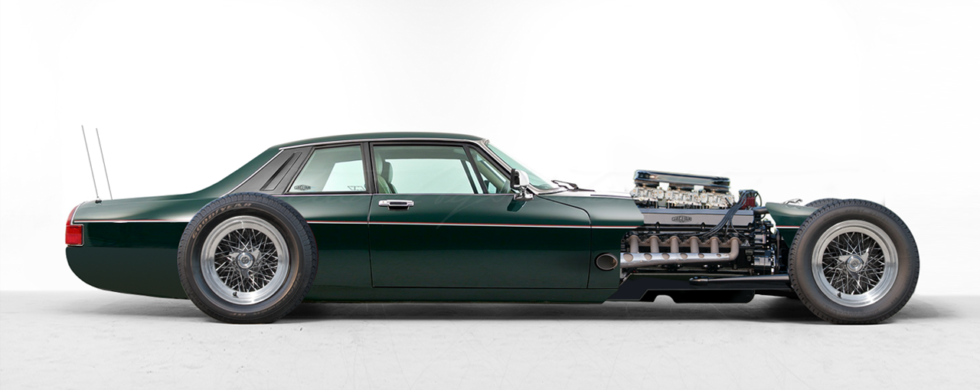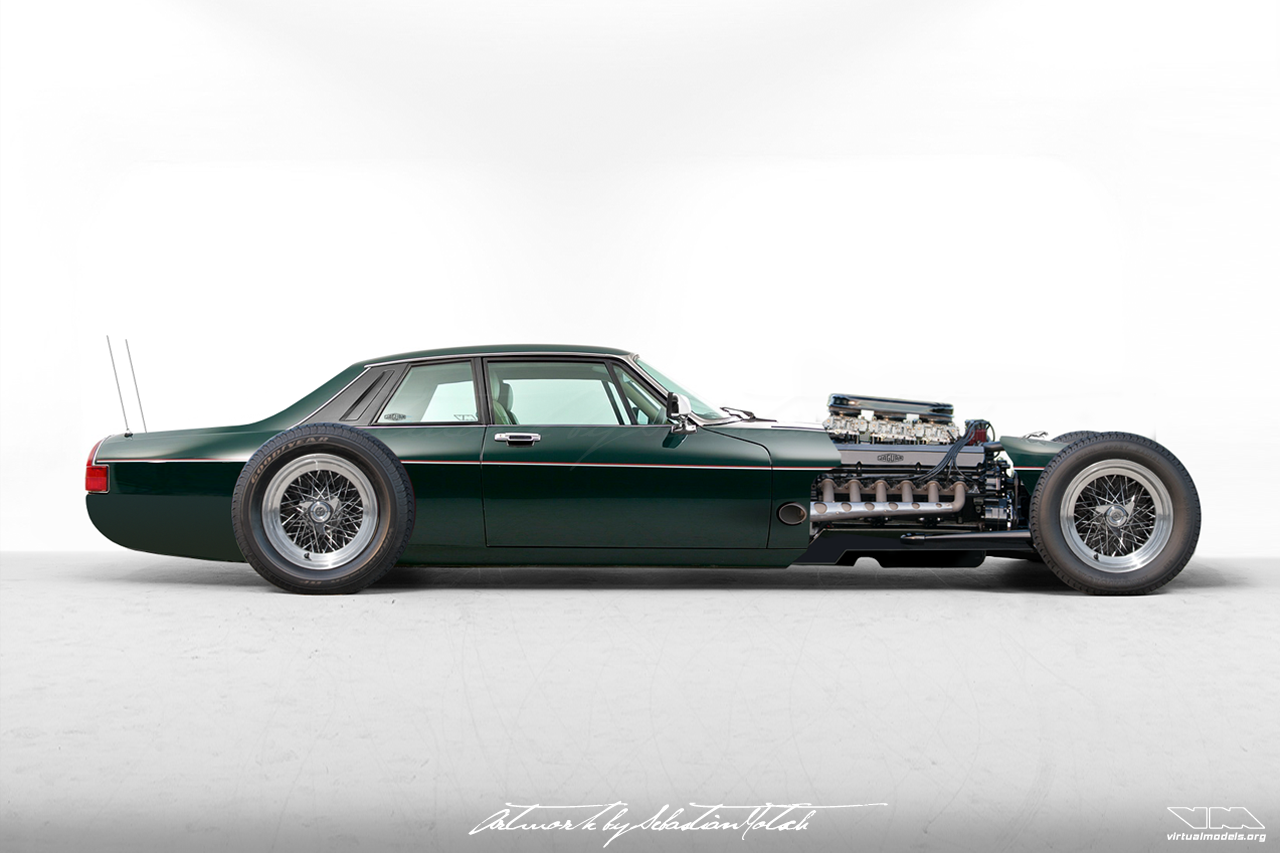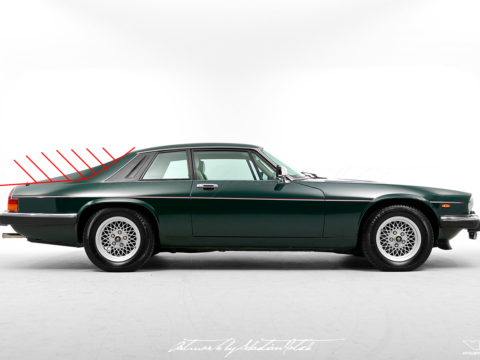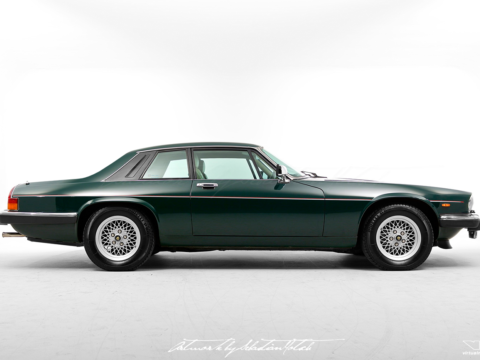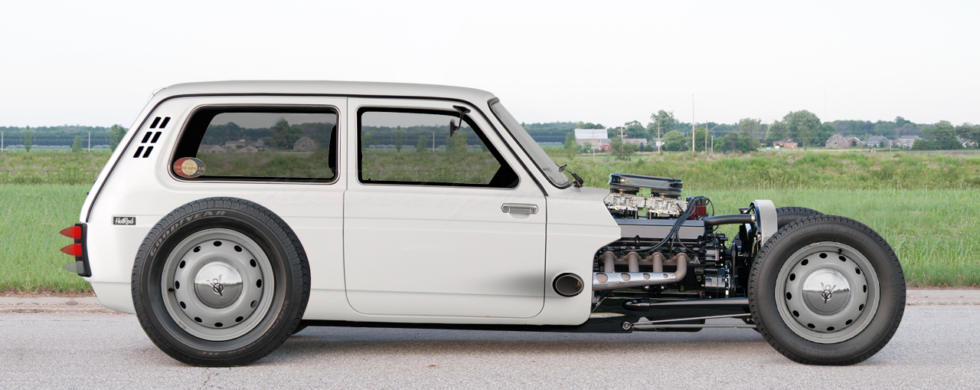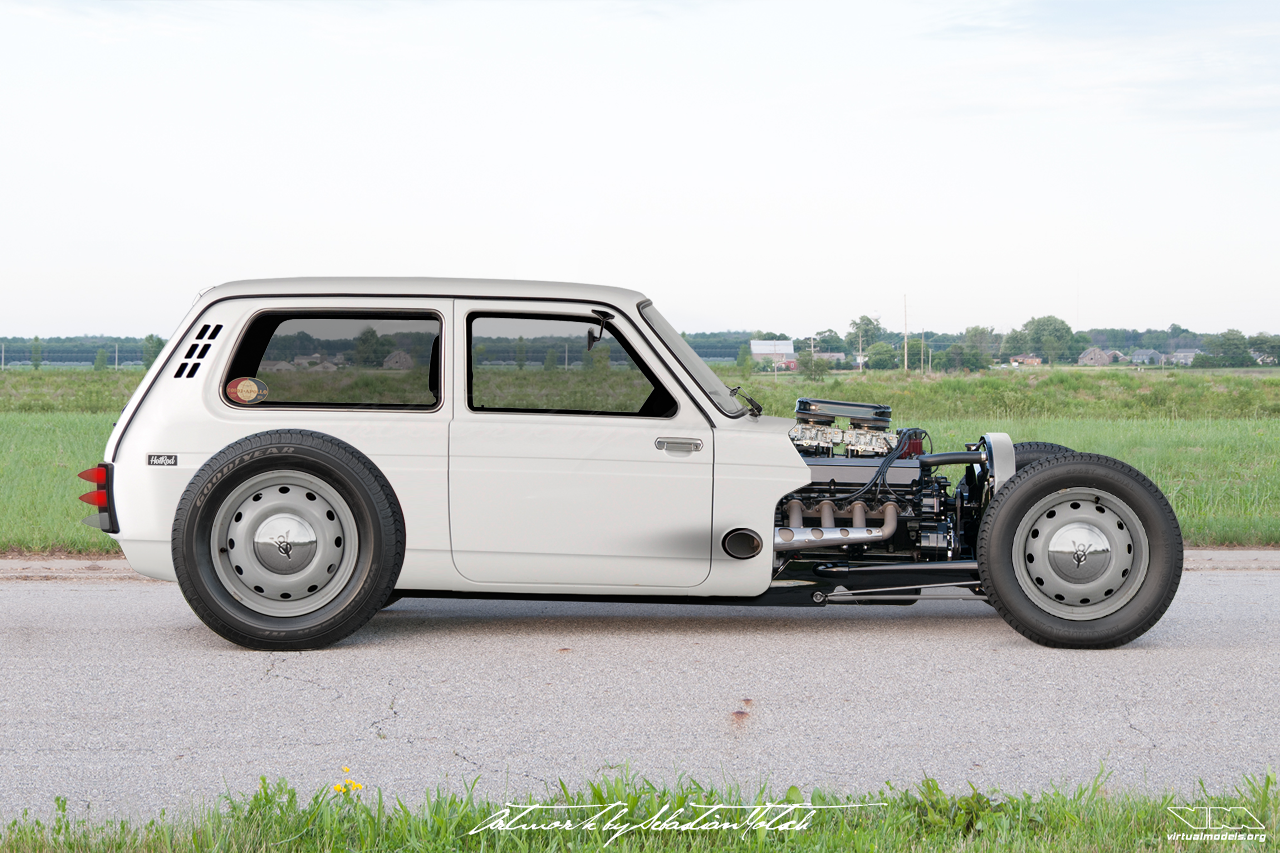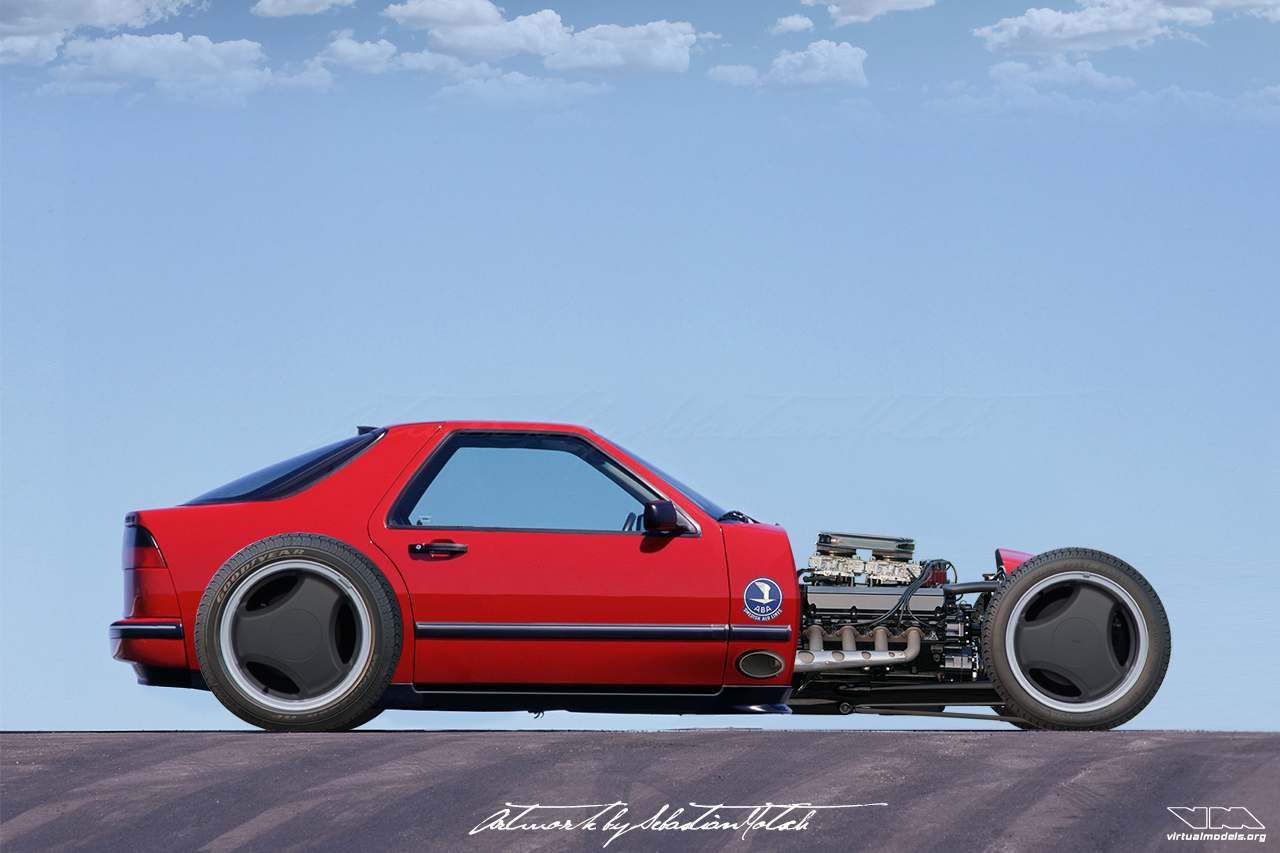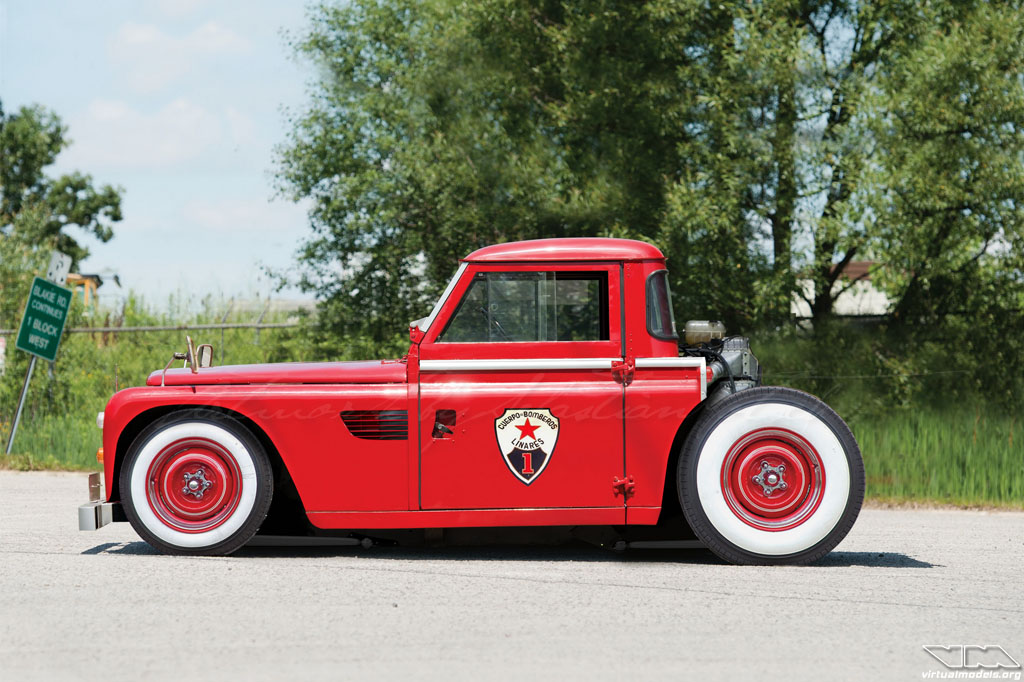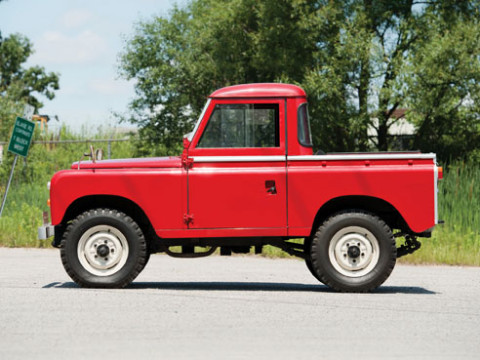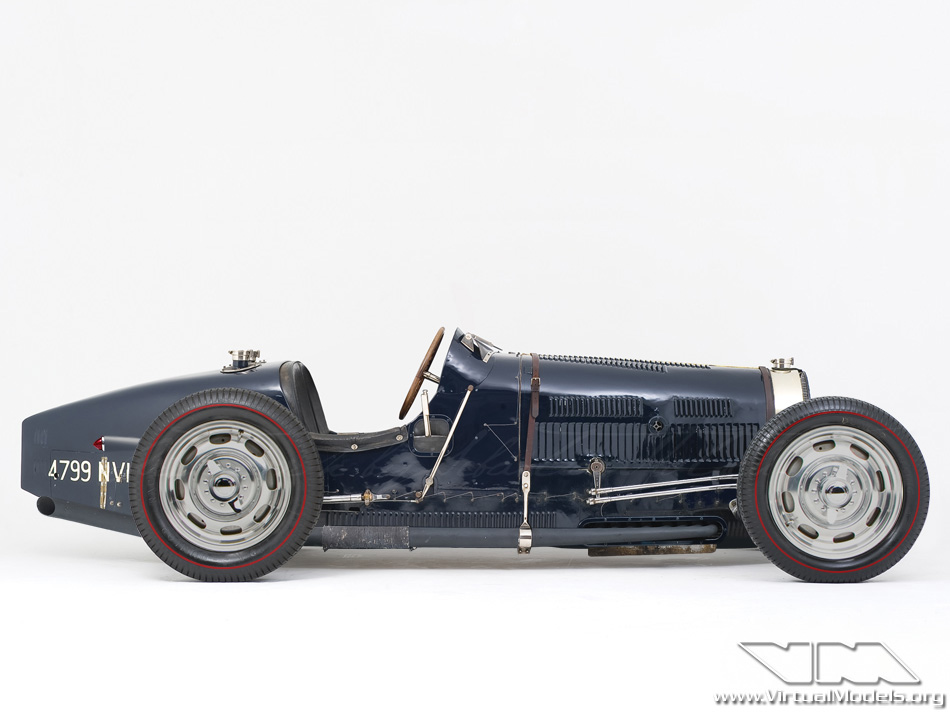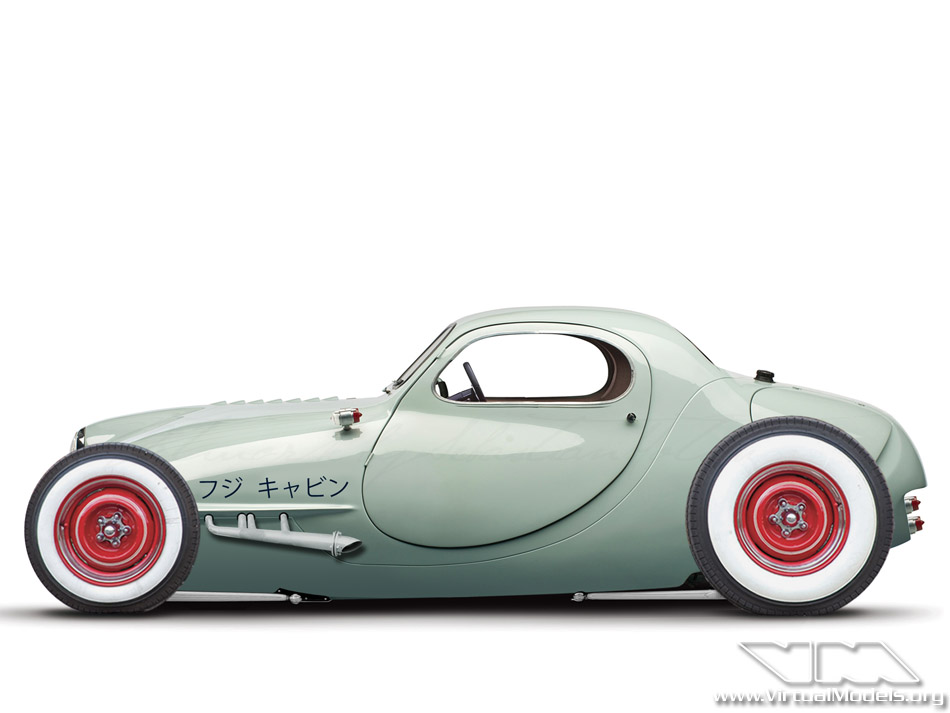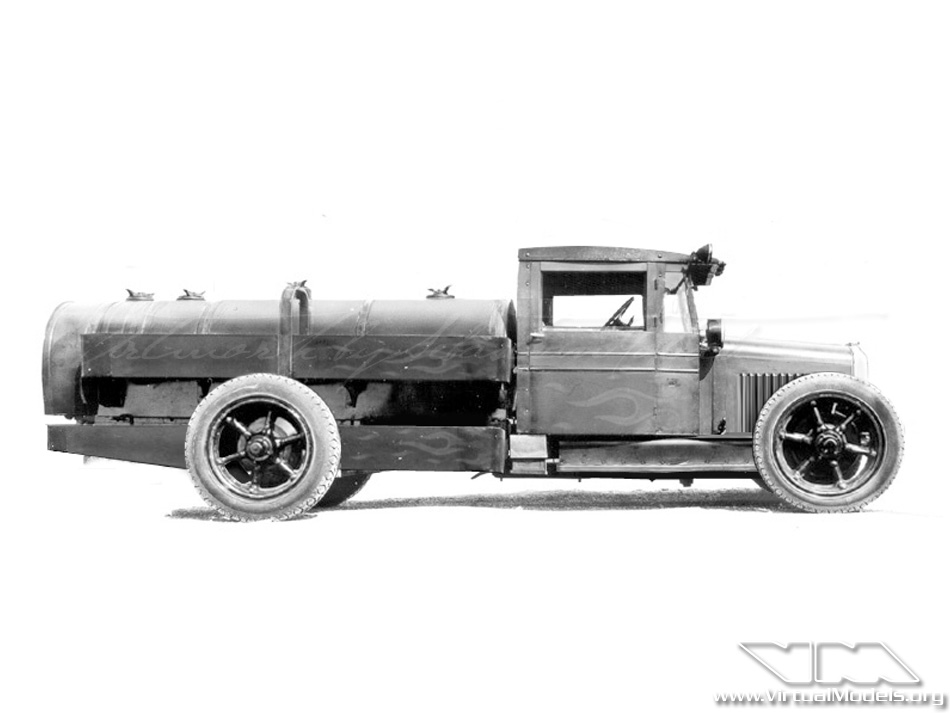15
 Chevrolet 4400 Chassis Cab | Hot Rod Concept
Chevrolet 4400 Chassis Cab | Hot Rod Concept
Sometimes a “quickie lunchbreak photoshop chop” is abandoned because of a small glitch that can’t be fixed at the time. In this case, I forgot the picture on my hard drive for a couple of years. With years more experience now, the then-unfixable glitch was remedied in a matter of not even 15 minutes and the chop finished.
Read More»28
1938 Sparks-Thorne Little Six racecar with six wheels [Tyrell P34]
The first Tamiya catalogue I had as an aspiring young scale modeler, featured a Tyrell P34 Formula 1 racecar with six wheels on the cover page. Needless to say that I was fascinated by the weird looks. Back then at the age of nine and with easy access to information on the internet decades away, I didn’t know why they came up with the idea of adding an axle. I just loved it because it was quirky and stood out from the other F1 cars of the time.
Read More»19
Jaguar XJ-S Notchback Hot Rod
Building the Hasegawa Jaguar XJ-S kit in 1:24 scale, I noticed that it is virtually impossible to lower the car properly without modifying the wheel arches. Bolt-on overfender are always an option, but it didn’t feel right with the lines of this classy coupé. Instead of cutting up the body of the plastic model, I put it back into the box and switched to Adobe Photoshop. After many failed attempts to relocate the wheel arches, I decided to hotrod the sled just for fun. This is entirely fictional for now, but could be done in reality. XJ-S prices are low and it isn’t exactly a rare car nobody dares to cut apart and weld back together in a different way.
The frame was extended to get the proportions right and to make it less butt-heavy than the stock design, I reshaped the C-pillars. Inspiration for this mod came, believe it or not, from the foxbody Mustang notchback. I think it improves the proportions of the car, but at the same time takes away one of the design quirks that make the XJ-S so unique and instantly recognizable. In order to keep with the classic hot rod theme, I didn’t use the Jaguar V12, but added four cylinders to a Ford V8 just for the heck of it. Open headers should provide an adequate soundtrack to match the visual impact.
06
When the Lada Niva (aka VAZ 21213) was launched in 1976, the iron curtain was not even half way through its existence. It would take another 13 years until the Berlin Wall came down in 1989, triggering the demise of the iron curtain. Now in 2018, 29 years later, this particular vehicle is still in production. Apart from using your new Niva (aka Taiga, aka 4×4) in the woods for hunting or similar activities it was intended to be great at, you could convert it to a hotrod. Yes, a hotrod. Find an old frame, throw all the good old performance parts at it along with a nice V8 engine and enjoy the balmy new car smell inhale cheap plastic fumes in your brand new, top-chopped cabin. I sincerely hope that someone builds this, or sends me pictures if such a beautiful thing contraption already exists. Just imagine rocking up in this hot rod at your local cars and coffee. Every other vehicle present would be invisible instantly.
Click here to see the original picture.
20
A good friend of mine recently bought a SAAB 9000 which didn’t look bad at first sight, but upon closer inspection, showed many signs of advanced wear and tear. Nothing serious, but the little things that need to be fixed add up quickly. So I fired up my creativity and came up with a solution that is neither simple nor quick to achieve – but would be stunning and a head-turner. Let me present: the SAAB 9000 Høt Rød Cøncept. Proudly sponsored by the long-defunct ABA Swedish Airlines. 😉
14
Creating a photoshop chop is easy, provided you have the tools, dedication and patience to do it properly. Creating a picture that stops people in their tracks because “it looks so real” is an entirely different story – and exactly what I aim for with my chops. Thinking about the possibility of building the project in reality is very important. Sometimes this is extremely complicated and prohibitively expensive – and sometimes it should be the proverbial piece of cake. This time around it’s the latter, because of the Land Rovers’ simple architecture, based on a ladder frame, and the straight panels. Y aquí – el Hot Rod des Bomberos de Linares. Why Linares? That’s easy to answer: because the Santana Series IIa in the picture I found is red and it has been built there. Or to use the phrase a friend coined many years ago: you can hot rod everything!
14
Creating a photoshop chop is easy, provided you have the tools, dedication and patience to do it properly. Creating a picture that stops people in their tracks because “it looks so real” is an entirely different story – and exactly what I aim for with my chops. Thinking about the possibility of building the project in reality is very important. Sometimes this is extremely complicated and prohibitively expensive – and sometimes it should be the proverbial piece of cake. This time around it’s the latter, because of the Land Rovers’ simple architecture, based on a ladder frame, and the straight panels. Y aquí – el Hot Rod des Bomberos de Linares. Why Linares? That’s easy to answer: because the Santana Series IIa in the picture I found is red and it has been built there. Or to use the phrase a friend coined many years ago: you can hot rod everything!
24
A friend of mine always says that “you can hotrod everything”. He definitely has a point there, even though many people might scream SACRILEGE in this case. Yes, you could do this to a vintage Bugatti Type 51 racecar – but it wouldn’t really make sense in reality. But hey, a picture is made up from pixels. Some of those pixels have just been altered and tweaked a little.
Disclaimer: No actual car has been harmed during the creation of this picture. 😉
03
With the recent closing of Bruce Weiners’ Microcar Museum, many pictures of before unseen (micro)cars have been posted on various websites. I found a picture of the 1955 Fuji Cabin online and spontaneously thought its’ overall shape just begs for being hot-rodded! It took many modifications, though – and might be next to impossible to realize in 1:1 scale. But hey, that’s part of the fun, isn’t it? I imagine it to be powered by a Honda S800 four cylinder engine, mounted in the traditional north-south configuration with rear wheel drive. The frame would quite possibly need to be custom made. Axles and other bits and pieces could either come from the same Honda or one of those tiny British roadsters of the sixties…
24
Last winter I found a picture of the Marmon HCM V12. In my opinion it looks rather bland and isn’t really well proportioned. But you can hot rod everything, can’t you? ![]()
I created a new picture with all the body parts on several layers. After finding some wheels that would fit the style I was looking for, I decided on the wheelbase. It is slightly longer compared to the original car and looks even longer, because I pushed the wheels out to the corners of the vehicle. Substantial lowering just had to be done for a proper stance. The roof was also chopped a little bit. I tried to keep the simple lines of the original body and just enhanced them. The color is the same as the donor cars’. I think the color is rather unique for a Hot Rod. And as always: some may like it, some may hate it. It’s just a matter of taste.
24
Ever since attending the Citroën 2CV meeting in Lit-et-Mixe (France) in May 2009 and seeing all the fantastic conversions, I created a unique 2CV myself. Voilá… after only two years playing with it in Photoshop: I’m proud to present my V8 powered 2CV – classic Hot Rod style. In order to break up the dull grey paintjob, I added wood panels and a bit of rust. Would I drive this thing in real life? You bet!
08
Just for fun I opted to chop a historic black and white picture of a GMC T-40 truck. Old school hot rodding!



